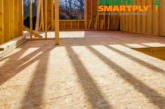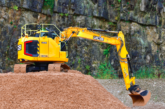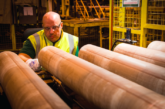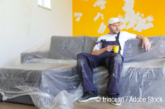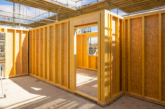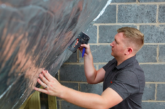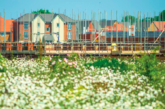
Iain Betts, an expert in mortar from Tarmac’s Building Products division, discusses how opting for coloured mortar can give housebuilders an edge and create buildings that stand out from the crowd.
 Capturing the interest and realising the aspirations of potential buyers continues to be a challenge for housebuilders. Combine this with a large proportion of consumers who have a fondness for properties with ‘character’, the growing popularity of self-build, and the reluctance to take on a large financial commitment that will potentially last a life-time, and housebuilders are finding that the new-build blueprint is not as predictable as it used to be.
Capturing the interest and realising the aspirations of potential buyers continues to be a challenge for housebuilders. Combine this with a large proportion of consumers who have a fondness for properties with ‘character’, the growing popularity of self-build, and the reluctance to take on a large financial commitment that will potentially last a life-time, and housebuilders are finding that the new-build blueprint is not as predictable as it used to be.
The solution for many UK housebuilders is to try and differentiate through the design of their buildings, both internally and externally. These changes can range from bespoke doors that create a greater sense of space within rooms, to optional extras that improve acoustics. External features focus on maximising kerb appeal which is logical considering the impact of first impressions on buyer interest and a successful sale.
Coloured mortars
A feature which is still regularly overlooked, despite having a huge impact on the look and appeal of a property, is the choice of mortar, specifically its colour. Ideal for masonry and roof tile bedding on projects of all sizes, mortar colours that go above and beyond the standard natural or buff options, can be beneficial to housebuilders for a number of reasons.
Alternative mortar colours are seen much more often in commercial markets where architects have more forgiving budgets and greater creative freedom that allows them to consider the type of mortar being used, alongside a wider range of brick finishes. Whilst natural or buff coloured mortars will blend in with the most common brick choices, matching the mortar exactly to the brick type can create a sleek, uniform effect. This works particularly well with modern and contemporary housing designs which continue to grow in popularity, especially with first time buyers.
As with interior trends, greys and dark tones are starting to become more common in the mortar world. They are successful at turning simple brickwork into a statement by reinforcing the shadow effect of a joint; especially when used alongside a lighter brick tone.
More daring colours, such as shades of red and yellow, also provide a greater degree of creative freedom. This is essential for creating a building that will truly stand out from the crowd and grab theattention of potential buyers. Plus, if the property is in an area where the local stone or brick is very distinctive, such as the yellow stone found in the Cotswolds, then using a match service to find the correct colour may be necessary to compliment surrounding buildings.
In addition to the beneficial aesthetics, a coloured mortar can help to maximise economies in other areas of a build. The nominal cost of coloured (in comparison to standard) mortar will enhance the appeal of a lower quality brick for instance. As mortar accounts for around 17% of the brick work area, it has the ability to transform the appearance of the completed build at a much lower cost.
Predictable finishes
Furthermore, choosing a reputable manufacturer which supplies factory produced mortar will ensure consistency and quality for an overall high-quality finish. A reliable production method and the inclusion of synthetic iron oxide pigments also removes the potential risk of fading and wash-out, which can happen if a contractor decides to colour a mortar themselves with separately purchased pigments.
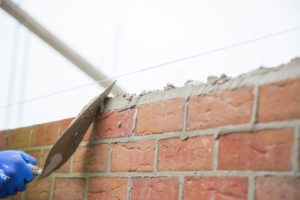 Plus, factory produced mortar is likely to be much more predictable and reliable in terms of the final colour once applied and dried. The industry-recognised and respected ‘Y reference’ is actually owned by Tarmac and was developed to help housebuilders achieve an accurate specification.
Plus, factory produced mortar is likely to be much more predictable and reliable in terms of the final colour once applied and dried. The industry-recognised and respected ‘Y reference’ is actually owned by Tarmac and was developed to help housebuilders achieve an accurate specification.
As housebuilders look to meet market demand and maximise return on the plots they have available, the building products being specified need to be considered more carefully. Rather than simply being components of a building, they need to be approached as tools for creating spaces that are appealing, affordable, and enjoyable to live in. Exploring different options, such as coloured mortars, is a simple and achievable way of doing just that.


